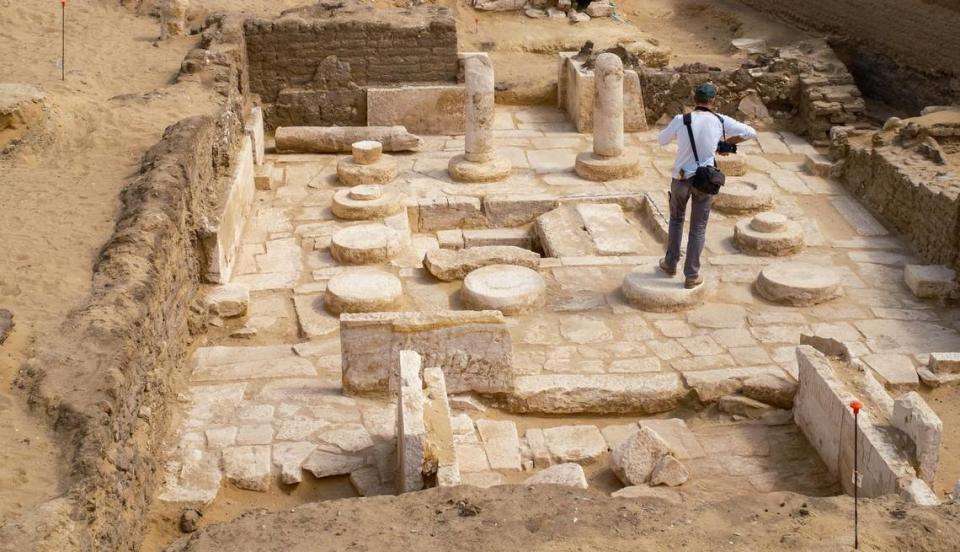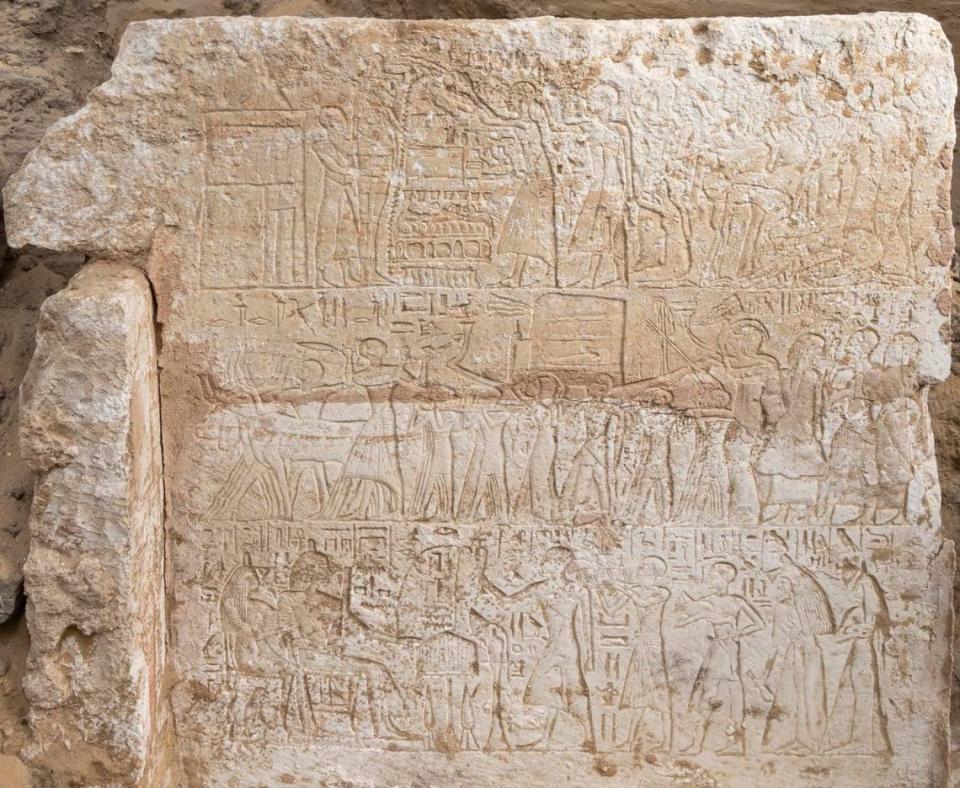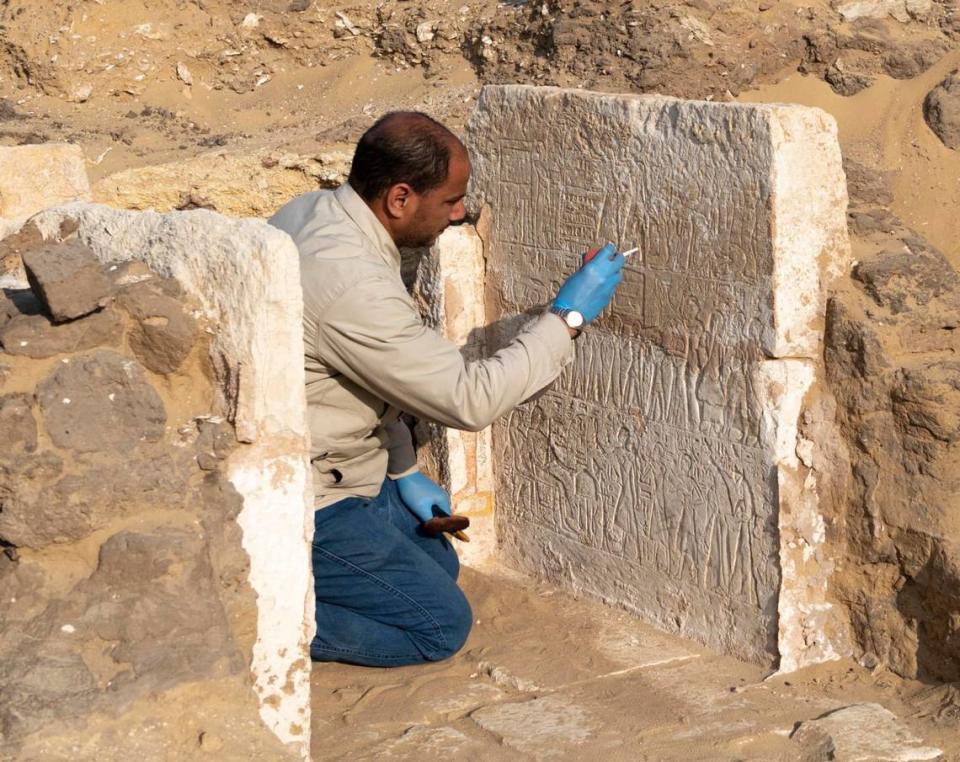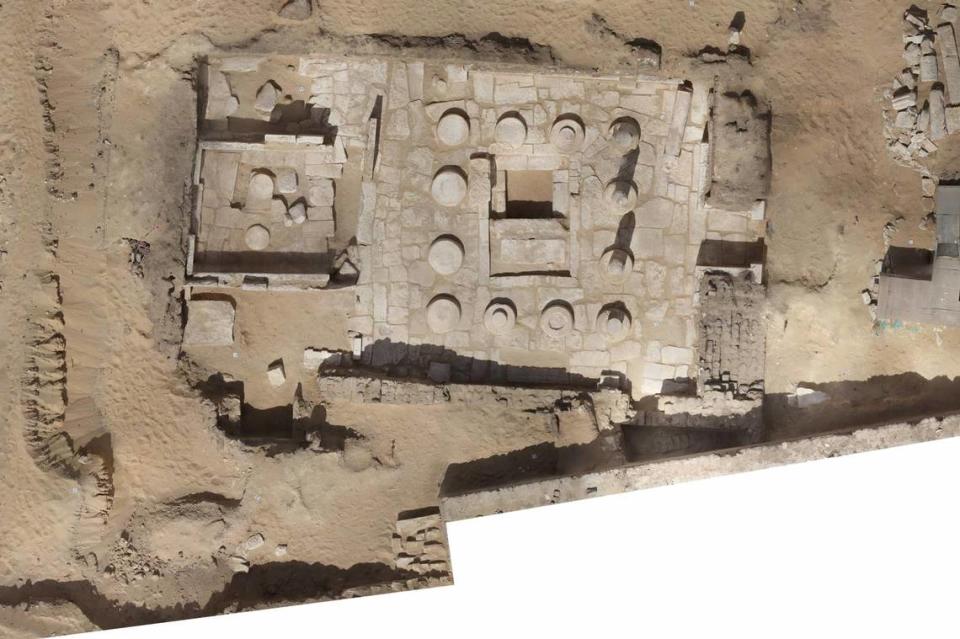3,200-year-old tombs — depicting funerals, gods and the afterlife — found in Egypt
An international team of archaeologists recently uncovered a complex of ancient tombs and chapels in Egypt.
The site, which is over 3,000 years old and dates to the time of Pharaoh Ramses II, was discovered in Sakkara, about 20 miles south of Cairo, according to an April 12 news release from the country’s Ministry of Tourism and Antiquities.
For centuries, Sakkara was a burial site for the old Egyptian capital of Memphis, the Dutch National Museum of Antiquities, which participated in the excavation, said in a news release.
The owners of all the tombs and chapels would have been members of the Egyptian elite, Lara Weiss, curator of the Egyptian and Nubian collection at the National Museum of Antiquities, told McClatchy News.
Inside the complex, archaeologists discovered a mud brick-walled tomb supported by columns, archaeologists said. Underground burial chambers accessible via a shaft were also uncovered.

The tomb appears as a free-standing structure, complete with a gate and courtyard, Muhammad Youssef, the director of the Sakkara antiquities area, told Mediterraneo Antico, an Italian magazine.
Hieroglyphics carved into the walls indicated that the tomb belonged to an official named Panehsy, who lived in Memphis and was a steward of a temple, the Dutch National Museum of Antiquities said.
Well-preserved wall carvings, which were up to 5 feet high, depicted Panehsy, his wife — described as a singer — and sacrificial bearers and priests, officials said.

“He had a very nice tomb with wonderful reliefs which show large traces of color,” Weiss said.
One of the most beautiful reliefs portrays a bald priest draped in a leopard pelt sprinkling water to honor Panehsy and his wife, officials said. The priest, whose name was Piay, was likely Panehsy’s assistant and would have been in charge of his funeral.
Panehsy “seems to have had no children,” Weiss said, adding that Piay appeared to take over the funerary duties that would have typically been handled by the eldest son.
Also unearthed at the site were four chapels associated with other tombs.
Only one contained an inscription of the owner’s name, officials said. According to the engravings, the owner’s name was Yoeyoe and he was the maker of gold foil for the pharaoh’s treasury. Reliefs inside his chapel depict his funeral as well as symbols of gods and the afterlife.
While smaller than Panehsy’s tomb, Yoeyoe’s chapel was filled with “interesting details,” including a depiction of a large funeral procession, Weiss said. It also included a portrayal of four generations of Yoeyoe’s relatives.
“What is fascinating is the different choices (the tomb owners) made,” Weiss said.

Yoeyoe’s chapel had previously been excavated over a century ago before becoming lost underneath the sand.
The excavation was a joint effort between Italy’s Egyptian Museum of Turin, the Dutch National Antiquities Museum of Leiden and the Egyptian Ministry of Antiquities.

Google Translate was used to translate news releases from the Egyptian Ministry of Tourism and Antiquities, the Dutch National Museum of Antiquities and an article from Mediterraneo Antico.
Colorful mosaics uncovered in underwater Roman spa puzzle experts. Take a look
Observant customer notices hole on restaurant floor. Then came a prehistoric find
‘Intriguing’ reports of cave-dwelling creature led to discovery of new species in India

 Yahoo Movies
Yahoo Movies 
